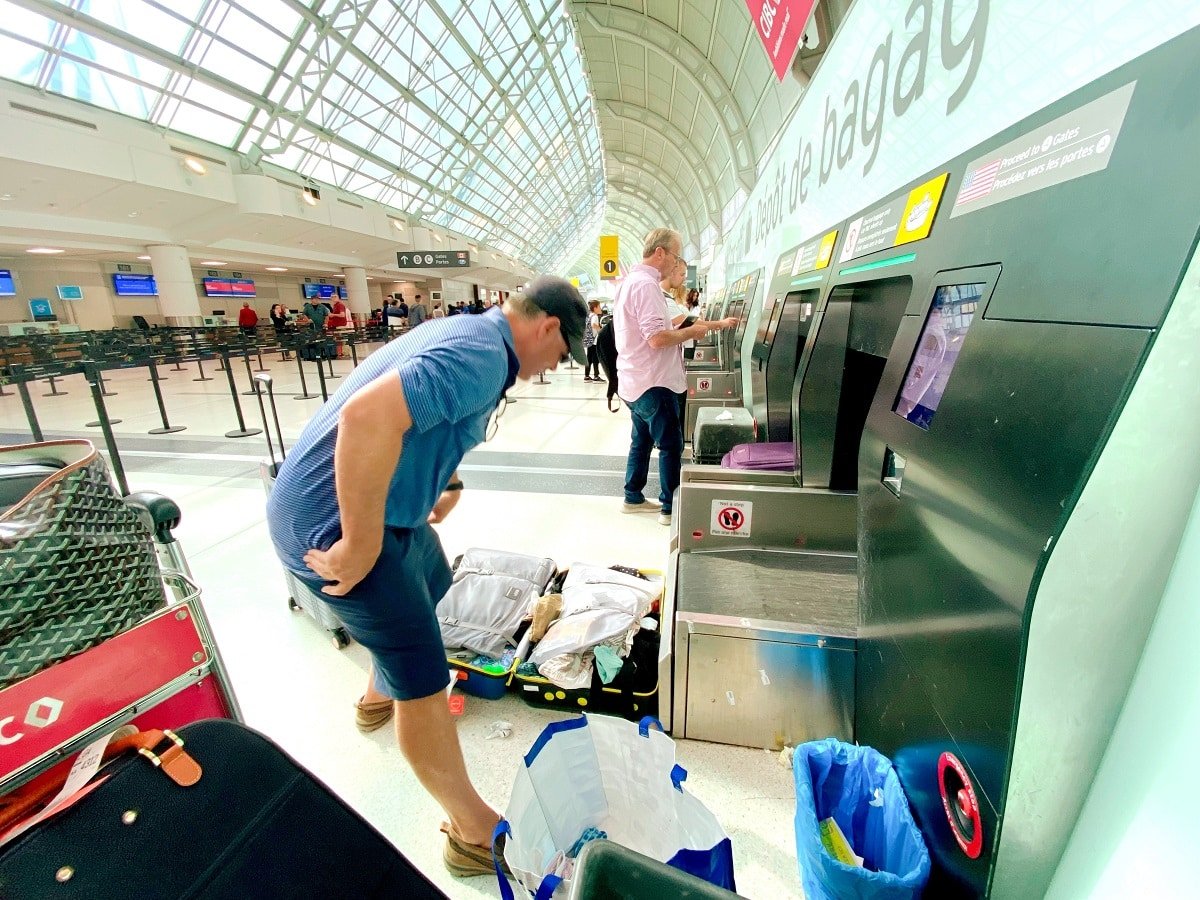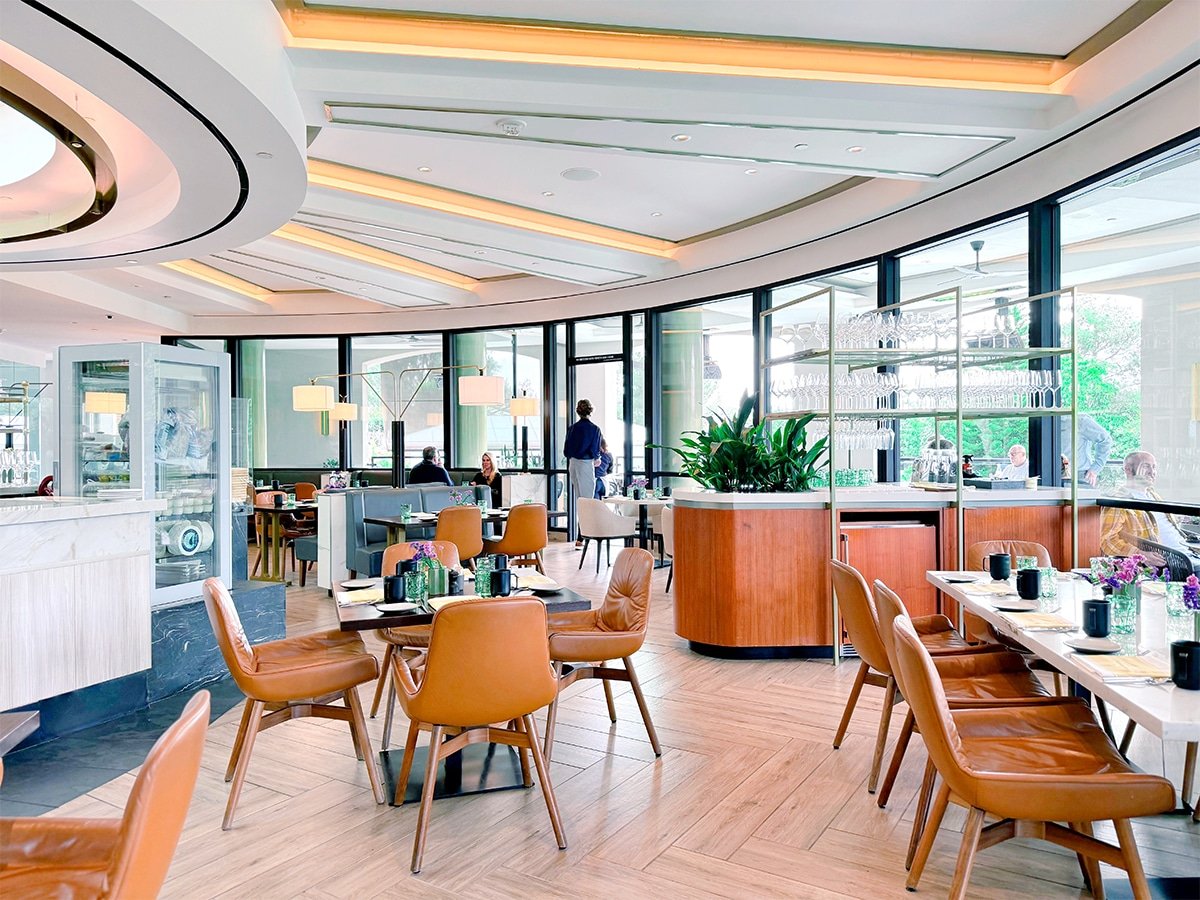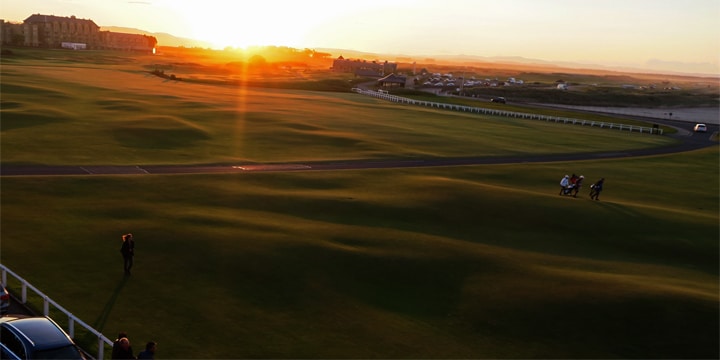
The approach to St. Andrews, Scotland from the south sets the tone for a town with such legend and lore as this one. Surrounded by rolling green hills and bright yellow gorse, you first see the ocean, and then a small city appears in the forefront with a skyline that’s looked the same for centuries. It’s here that tourists and golfers-from amateur to world’s best-come to pay homage to their ancient game.
The Old Course
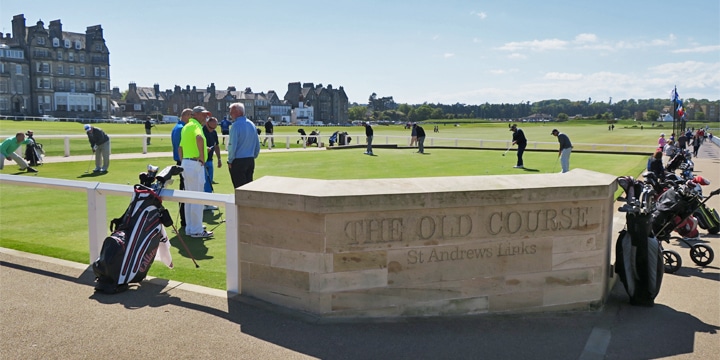
St. Andrews is known as the “home of golf” because it’s believed this is where the sport was first played in the 15th century. A must-visit, the Old Course is located outside the center of town and adjacent to a sprawling, white sandy beach, providing the backdrop for the world-famous Swilcan Bridge and Hell Bunker.
Although playing the Old Course is every golfer’s dream, scheduling a tee time can be difficult. The course is public and open to everyone, providing opportunity for anyone to play, along with high demand year-round. The most common way to get on the course is to enter the ballot, which enters you into a drawing with every other golfer for the limited tee times available. The ballot is drawn every day for scheduling two days ahead, so if you’re planning on playing the Old Course, expect to stay in St. Andrews for a few days increase your chances.
Walk the Old Course for Free
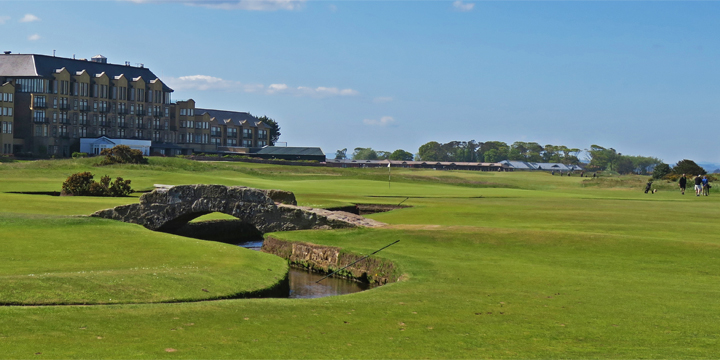
Visitors are encouraged to walk the course and take photos anytime, but be cautious not to interrupt play. The best time to do this is Sunday, when the course is closed for play each week so the townspeople can walk its grounds and even have a picnic, a tradition that dates back centuries.
Legendary Golf is Everywhere
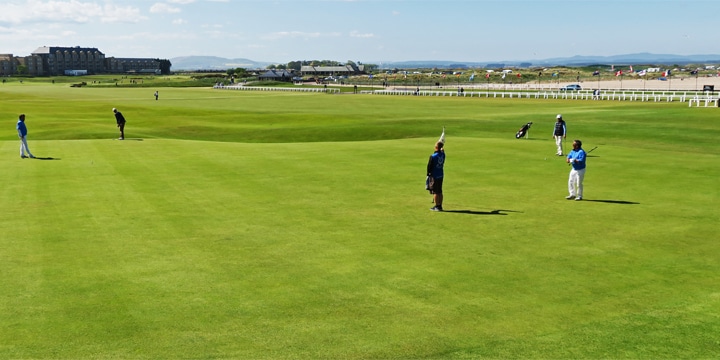
While the Old Course is the most popular in St. Andrews, it’s one of seven courses that make up St. Andrews Links, the largest public golfing complex in Europe. There are two other championship courses, New Course and Jubille Course, and on the opposite side of the links are the Eden, Strathtyrum and the Balgove. The seventh, the award-winning Castle Course, is a five-minute drive from St. Andrews and offers spectacular views of the town.
Macdonald Rusacks Hotel
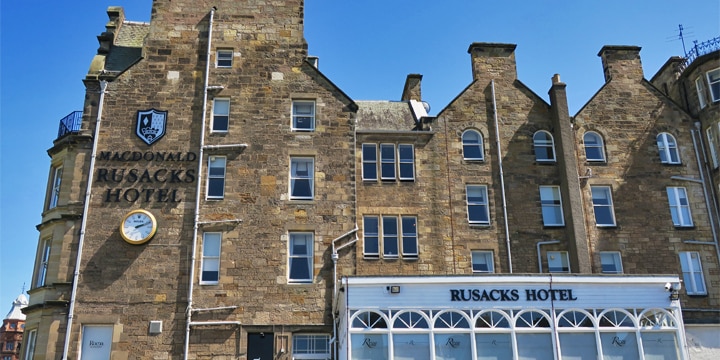
For the ultimate golf bucket list experience, stay at the Macdonald Rusacks Hotel located off the 18th green of the Old Course. The hotel of choice for golf legends like Arnold Palmer, Jack Nicklaus and Nick Faldo to celebrities like Mick Jagger, the Rusacks Hotel offers five-star amenities with a location that can’t be beat. The hallways are decked with photographs of famous guests, champions from The British Open (which is held at the Old Course every five years) and the paintings depicting the rich history of the course and the sport itself.
If you stay at the Rusacks, eat at least one dinner at their restaurant, Rocca Bar & Grill. Request a table near the window, so you can watch golfers take on the 18th hole of the Old Course while sampling the region’s finest whisky and fresh seafood. I had the Isle of Gigha Halibut and a Scottish Seafood Bouillabaisse while watching the 10pm sun begin to set over the 18th fairway…I’ll never forget it.
The Dunnie

When you’re finished with dinner, head out to most famous golf pub in the world, the Dunvegan aka the “Dunnie,” for a pint. When you walk in, you’ll immediately see why the place is a legend. The entire pub is covered with memorabilia and photos of the biggest names in golf’s history. This is the pub the professionals go to after a round at the Old Course; you might even see a familiar face or two when you visit.
St. Andrews Castle
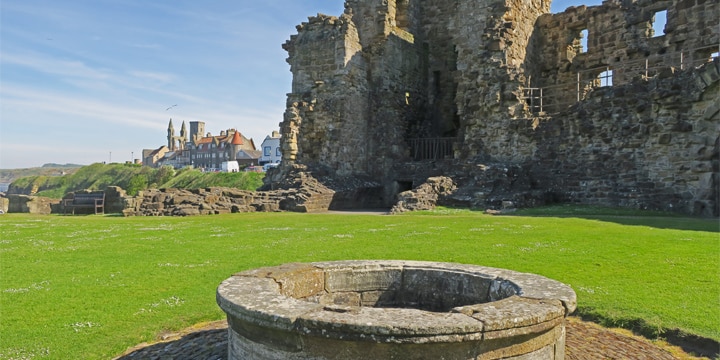
While golf is the primary focus in this town, there are sights to see. The first is St. Andrews castle, overlooking the ocean and located near the University just outside the city center. The castle is surprisingly intact and open daily for self-guided tours.
While there are many impressive attributes, the most unique is the mine and countermine, showcasing a feat in 16th century engineering. In 1546, St. Andrews Castle was under siege following the murder of a Cardinal and being taken over by his assassins. Troops were ordered to take back the castle, which began digging a mine under the castle to bypass its thirty-foot walls. In return, the defenders of the castle began to dig their own countermine. After a few unsuccessful attempts and re-routing, the defenders found the mine and fended off the intruders. Today, you can walk a quarter-mile underground down the countermine from inside the castle grounds, with scars from pick axes still etched into the stone. The mine and countermine are among the most important medieval siege works to be found anywhere in Europe.

St. Andrews Cathedral
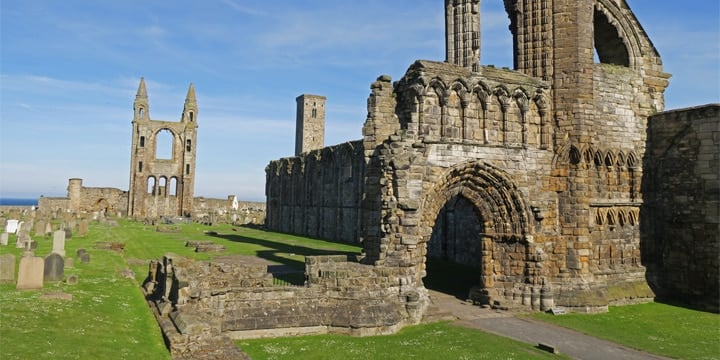
When building began in 1160, no one could have predicted the turbulent future of St. Andrews Cathedral. Construction took over a century to complete, and severe damage was inflicted by a storm in the 1270s, then again by a fire in 1378. Another storm brought down one of the arms of the church running north to south forming a cross shape, and in 1559 a fiery sermon by John Knox influenced his congregation to destroy much of its rich furnishings. After the office of bishop was abolished in 1689, the cathedral fell into ruin as you see it today.
The cathedral museum is worth a visit and features stone carvings and other artifacts that survived the centuries, including post-Reformation gravestones dating back to the 1600s and mason sketches from the early 1200s.






